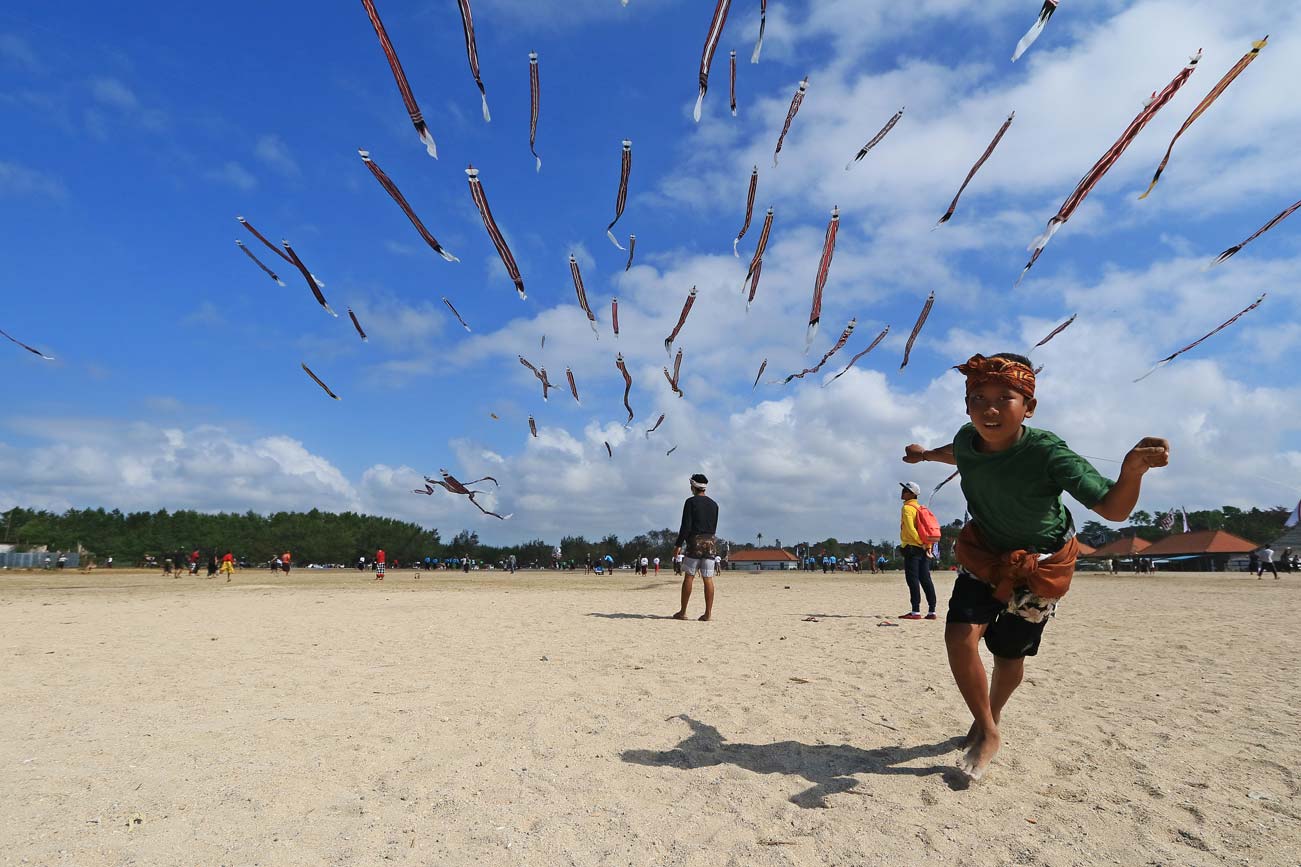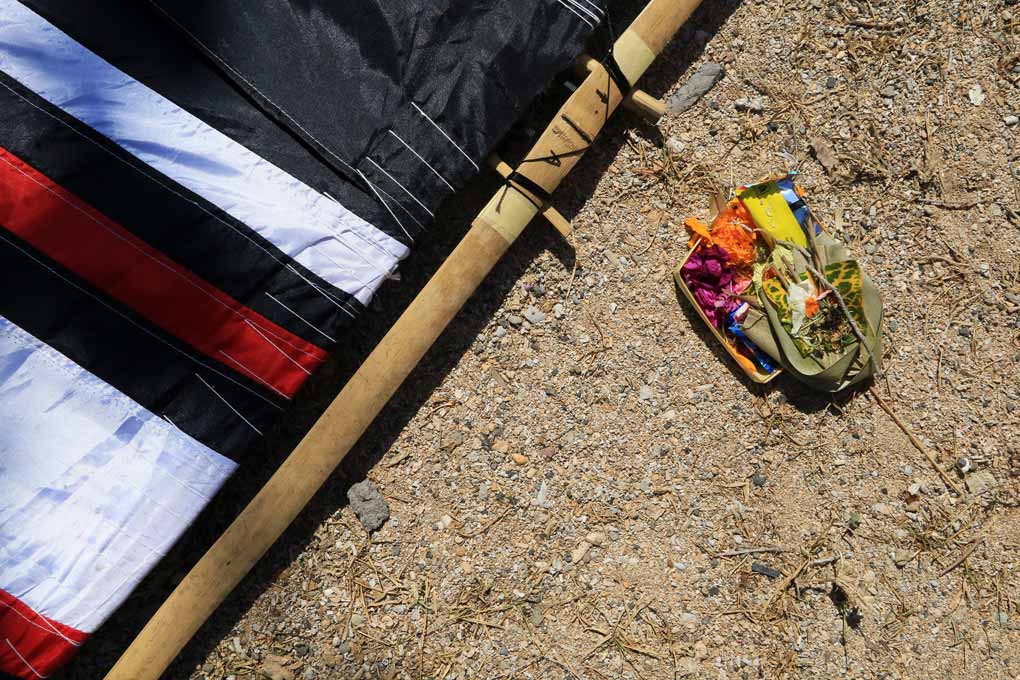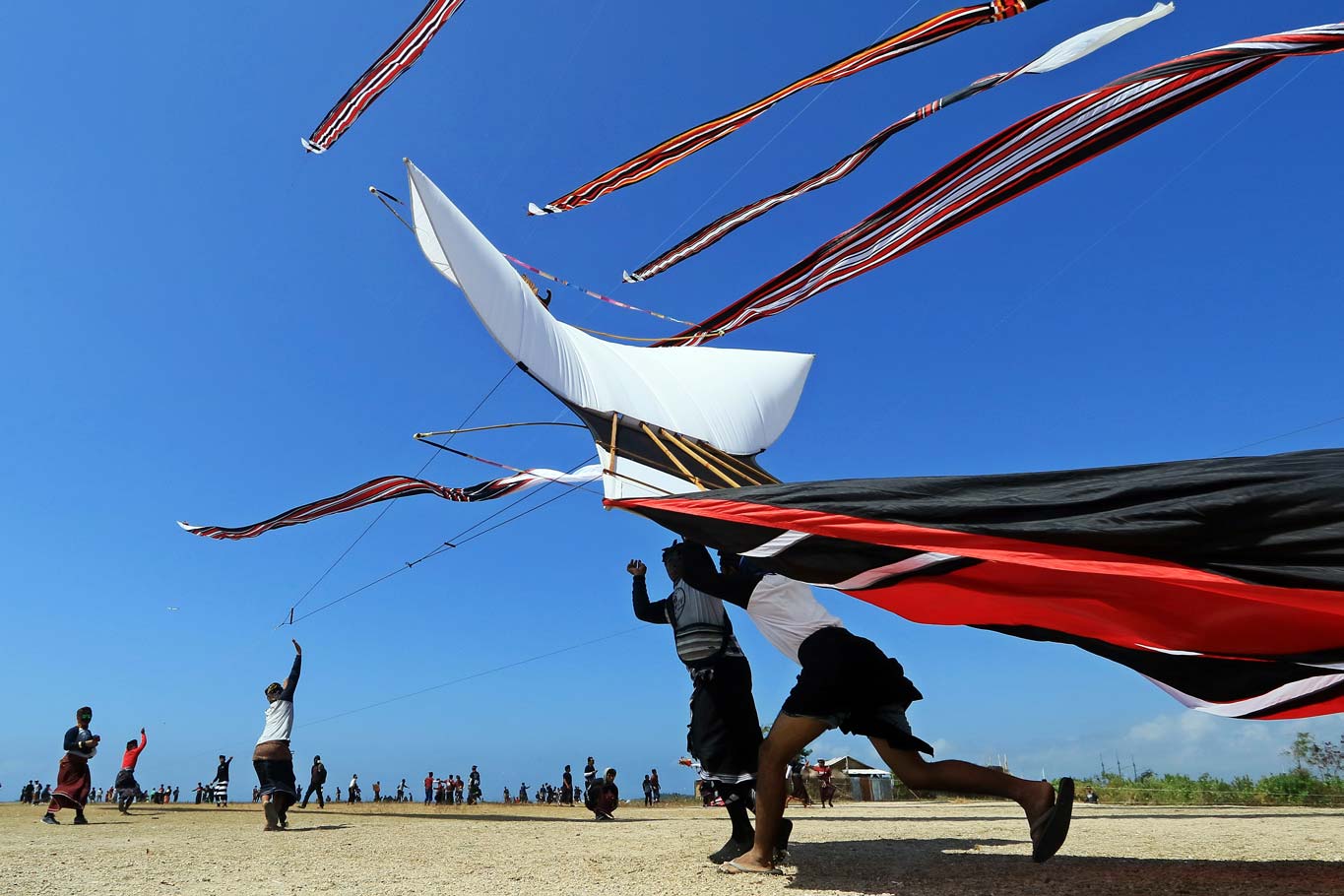First introduced by Frank Hoy at the Arizona State University, EDFAT is short form for Entire, Detail, Frame, Angle, and Time. This acronym is a shooting approach mainly used by journalists to communicate better visual stories from their pictures. For travelers, this EDFAT approach is useful for photography on the road, and a great way to document journeys with the complete story.
In this article, I will demonstrate how you can use EDFAT, by taking pictures of Mel Tanjung Kite Festival held at Sanur Beach, Bali, Indonesia in late August 2017. This is an annual festival of Bali’s traditional kites and has more than 1000 kites for participants.
1. Entire
Entire means capturing a picture of the whole scene. During traveling, we may need to capture a subject and its environment completely in one picture. Entire is a good way to frame the subjects within a place, cultural ceremony, festivals, or groups of people. Usually, Entire is taken with wide shot that will deliver a preliminary view of what is going on within a specific setting – that is a clear way of telling a photo story. So, Entire is like an introduction shot before we go deeper. We also call this type of picture an established shot.

EOS M3; EF-S10-22mm f/3.5-4.5 USM; 10mm; f/8; 1/1000 sec; ISO-200

EOS M3; EF-S10-22mm f/3.5-4.5 USM; 10mm; f/4.5; 1/3200 sec; ISO-200
2. Detail
If Entire is about stepping back to give a wider view, Detail teaches us to step closer to capture the specifics of the subject. When we travel, sometimes we enjoy the view or the scenery so much that we forget about the amazing details of the subject. Capturing these features will help give your audience better understanding about the subject.

EOS M3; EF-S10-22mm f/3.5-4.5 USM; 22mm; f/11; 1/400 sec; ISO-200

EOS M3; EF-S10-22mm f/3.5-4.5 USM; 22mm; f/4.5; 1/2000 sec; ISO-200
3. Frame
Frame is composition technique that can be translated as putting a point interest in the shot. To do framing, we need to pay attention to our surrounding and use it to focus on what we think is most interesting point of our picture.

EOS M3; EF-S10-22mm f/3.5-4.5 USM; 10mm; f/5.6; 1/160 sec; ISO-200

EOS M3; EF-S10-22mm f/3.5-4.5 USM; 15mm; f/4; 1/320 sec; ISO-200
By framing, we give the context and correlation between scene and subject. Framing also enables viewers to see the essence of the picture and improve our skills of composition.
Learn more about composition in below articles:
Simple but Essential Compositions (Part 1): Rule of Thirds & Rule of Quarters
Simple But Essential Compositions (Part 2):Centre Composition & Diagonal Composition
4. Angle
As a travel photographer, we should keep moving around to get better angles of every subject. Try to shoot from lower, higher, sides, or any other angle to give different impact in our shots.

EOS M3; EF-S10-22mm f/3.5-4.5 USM; 22mm; f/4.5; 1/320 sec; ISO-200

EOS M3; EF-S10-22mm f/3.5-4.5 USM; 12mm; f/4.5; 1/1000 sec; ISO-200
Bird-eye view will make the area look wider while low angle will create impression of majestic scale to the subject. Keep in mind that we need the right angle to separate the subject from its background to make it clearly visible.
5. Time
Time means the best moment of a scene or the perfect moment that occurs in a period of time. Sometimes we need to shoot immediately before we miss the best moment but other times we need to be patient and wait for the best opportunities to come to us. Often, the best moment only happens once so we need to stay focused and have a good understanding of the scene to anticipate its arrival. The photo-worthy shots below were captured when the pelayang (the person in charge of the kite) was trying his best to keep his kite flying and the decisive moment when Janggan (long tail kite) leaves the hands of the pelayang.

EOS M3; EF-S10-22mm f/3.5-4.5 USM; 10mm; f/11; 1/400 sec; ISO-200

EOS M3; EF-S10-22mm f/3.5-4.5 USM; 10mm; f/8; 1/800 sec; ISO-200
And we are done with the 5 essentials for travel photography! Go out, get on a plane and see the world for all its picturesque beauty. Remember to share everything you see through your lens.
Learn more about other photography technique below:
Gestalt Theory in Street Photography
Receive the latest update on photography news, tips and tricks.
Be part of the SNAPSHOT Community.
Sign Up Now!About the Author
An office worker that loves photography. Always with his camera wherever he goes. Recording every side of human life, place, nature, space, and shape. Hoping to spread happiness and the beauty of photography, also stories through a photograph.


































